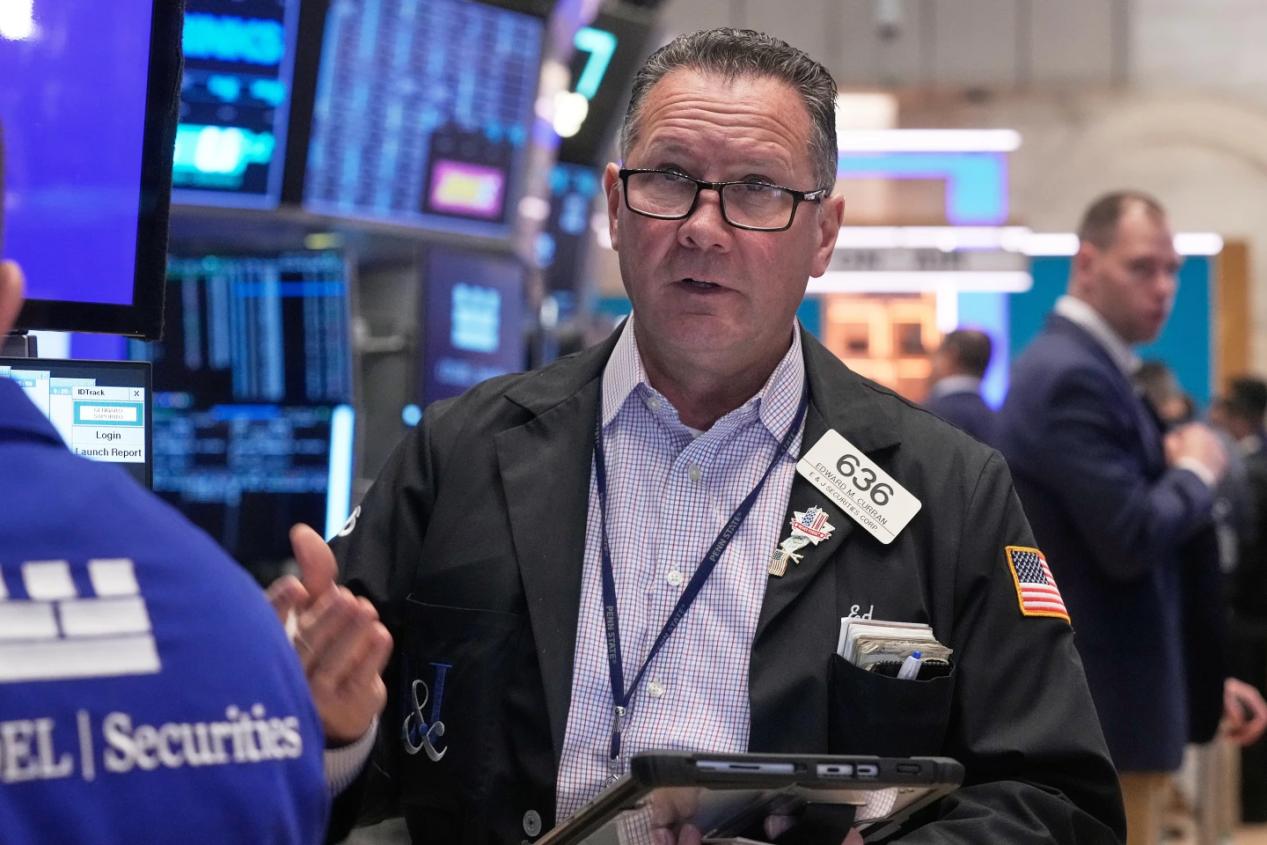
With the continuous evolution of the global economic landscape, the focus of the financial markets is on the monetary policy developments of the Federal Reserve. According to relevant data, the probability of the Federal Reserve cutting interest rates by 25 basis points in December is as high as 66.0%. This expectation, like a stone thrown into a calm lake, has caused ripples in the economic field, triggering widespread attention and in-depth discussions across various sectors.
From the perspective of the macroeconomic background, a series of recent economic indicators have shown a complex situation. On the one hand, signs of a slowdown in US economic growth have emerged, with some traditional industries under pressure. The Manufacturing PMI index has fluctuated downward, reflecting insufficient momentum for enterprise production expansion. Although the job market remains relatively stable, the growth rate of the number of newly created jobs has slowed down, and the growth rate of salaries has not reached the expected robust level, which has brought certain concerns to the continued prosperity of the consumer market. On the other hand, inflation data has been relatively moderate, without significant deviations beyond the target range, providing some room for the Federal Reserve to consider an interest rate cut. In the context of global economic integration, uncertainties in the international economic situation, such as the slowdown in the economic growth of major trading partners and geopolitical conflicts, have also had spillover effects on the US economy, prompting the Federal Reserve to re-evaluate its monetary policy stance.
If the Federal Reserve cuts interest rates by 25 basis points as scheduled in December, it will have multi-dimensional and profound impacts on the US domestic economy. At the financial market level, the reduction in interest rates will directly affect bond yields, causing bond prices to rise and attracting more funds into the bond market. The stock market may be boosted due to the reduction in the cost of capital. The decline in corporate financing costs is expected to encourage enterprises to expand their investment and production scales, thereby driving up stock prices. However, an interest rate cut may also trigger concerns about the economic outlook among investors. If investors believe that the interest rate cut is a response to the risk of an economic recession, it may lead to increased market volatility. In the real economy field, an interest rate cut will help reduce the borrowing costs of enterprises and residents, stimulate enterprises to increase credit financing for equipment renewal, technological research and development, etc., and promote consumer credit among residents, such as housing purchases, car purchases and other consumption behaviors, thereby stimulating domestic demand and injecting new impetus into economic growth. The real estate market may experience a new round of increased activity due to the reduction in mortgage interest rates, driving the coordinated development of related upstream and downstream industries.
From a global economic perspective, the interest rate cut by the Federal Reserve undoubtedly has a powerful spillover effect. For emerging economies, on the one hand, the decline in the US dollar interest rate may lead to a reduction in the repatriation of US dollar funds, and even some funds may flow in due to the relatively high interest rate returns in emerging markets, which will help relieve the funding pressure of emerging economies and promote their economic development and financial market stability. On the other hand, the expectation of a depreciation of the US dollar may cause the currencies of emerging economies to appreciate relatively, causing a certain impact on their export industries and affecting the balance of international trade payments. For other developed economies, the interest rate cut by the Federal Reserve may trigger a chain reaction in global monetary policies, prompting other central banks to re-evaluate their own monetary policy stances. Some central banks may follow suit and cut interest rates to maintain the competitiveness of their domestic currencies and economic stability, which will further change the global capital flow pattern and exchange rate system.
However, the December interest rate cut by the Federal Reserve is not a certainty and there are still many uncertain factors. Economic data may still fluctuate and reverse in the future. If the job market suddenly improves or inflationary pressure unexpectedly rises, the Federal Reserve may reconsider the interest rate cut decision. In addition, differences within the Federal Reserve regarding the path of monetary policy may also affect the final decision result. Some hawkish officials may worry that an interest rate cut will trigger asset bubbles and weaken the status of the US dollar, and thus advocate maintaining the interest rate unchanged or only making minor adjustments. Meanwhile, dovish officials may be more concerned about the pressure of slowing economic growth and strongly advocate stimulating economic recovery through an interest rate cut.
From the perspective of market expectation management, the communication strategy of the Federal Reserve is particularly crucial. If, in future public statements or remarks by officials, the Federal Reserve can clearly and reasonably explain its judgment of the economic situation and the logic behind the interest rate cut decision, it will help stabilize market sentiment and avoid excessive speculative behavior that may cause market turmoil. Conversely, if the communication is not smooth, the market may misunderstand the intention of the Federal Reserve, which may then lead to disorderly fluctuations in the financial market and affect the normal operation of the real economy.
For US financial institutions, an interest rate cut will directly affect the spread earnings of their deposit and loan businesses. Commercial banks may need to readjust their asset-liability structures to find new profit growth points. For example, in a low-interest-rate environment, they may increase their efforts to expand intermediate businesses, such as wealth management and financial consulting services. Meanwhile, investment banks may encounter more opportunities in corporate mergers and acquisitions, capital market financing and other businesses, as enterprises will be more motivated to carry out strategic expansion and capital operations when the financing cost is reduced.
In international trade, the exchange rate changes triggered by the US dollar interest rate cut will have completely different impacts on US import and export enterprises. Export enterprises may gain a price advantage in the international market due to the depreciation of the US dollar, thereby stimulating the growth of export volumes. However, the costs of import enterprises will increase correspondingly, especially for those enterprises that rely on imported raw materials and parts, facing the pressure of rising costs and shrinking profits. This may prompt enterprises to seek domestic substitute suppliers or use financial instruments such as hedging to hedge against exchange rate risks.
In the long run, the direction of the Federal Reserve's monetary policy will also have a profound impact on the adjustment of the US economic structure. A continuous low-interest-rate environment may accelerate the allocation of resources to emerging industries and innovative fields, promoting the transformation and upgrading of the US economy in the direction of digitalization and intelligence. For example, in the field of scientific and technological research and development, more funds will flow into cutting-edge industries such as artificial intelligence, biotechnology, and new energy, helping to enhance the leading position of the US in global scientific and technological competition. However, traditional industries may face greater survival pressure. If they cannot transform and innovate in a timely manner, they may gradually be eliminated by the market.
For global investors, the December interest rate cut decision by the Federal Reserve will be an important reference factor for investment decisions. In terms of asset allocation, investors need to comprehensively consider the performance of different asset classes in an interest rate cut environment. Besides the traditional stock and bond markets, safe-haven assets such as gold may be favored due to market concerns about economic uncertainties. Meanwhile, investment opportunities in emerging markets may increase due to the expected inflow of funds, but investors also need to fully assess the political, economic, and financial risks of emerging markets.
Although the probability of the Federal Reserve cutting interest rates by 25 basis points in December reaches 66.0%, the final result is still affected by the interaction of various complex factors. Both the US domestic economy and the global economy need to closely monitor the monetary policy developments of the Federal Reserve and make preparations in advance to seek stability and development in the constantly changing economic and financial environment. The decision of the Federal Reserve will be like a crucial hub, driving the gears in the global economic and financial system to turn, and its chain reactions and subsequent impacts are worthy of continuous in-depth research and tracking.

On the just concluded trading day, the three major stock indexes in the United States closed with a moderate upward trend, marking the fifth consecutive trading day of uptrend in the market.
On the just concluded trading day, the three major stock in…
By the end of 2025, the US financial sector is being swept …
In just one month, former Japanese Prime Minister Shigeru I…
On the grand stage of the financial market, expectations of…
The Japanese government officially finalized a supplementar…
A recent analysis indicates that North Korea is leveraging …